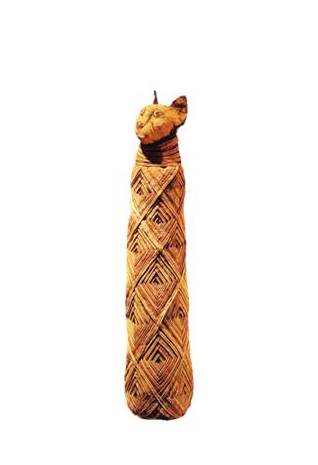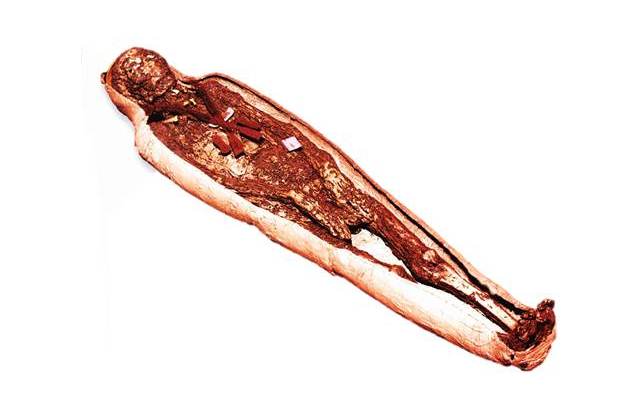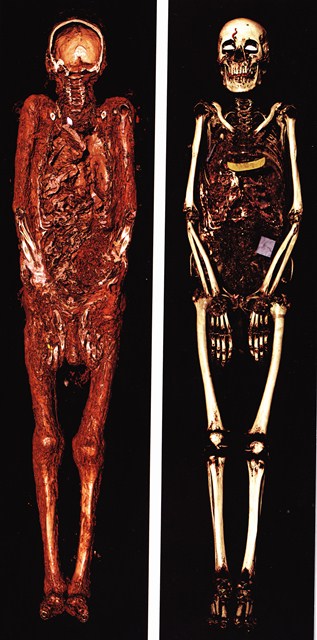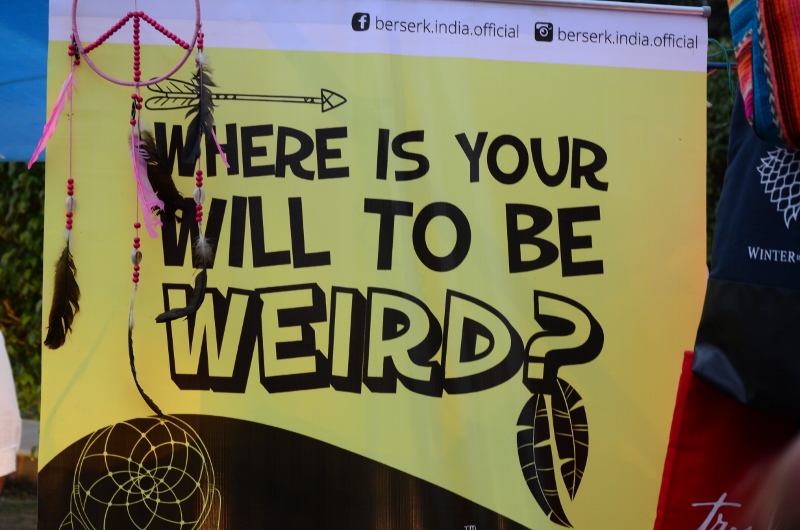Nesperennub, a priest at the temple of Amun-Ra, had severe dental abscesses, which would have given him terrible pain when he was alive. He had a small cavity on his skull, above his left eye. He was a man of high status and belonged to an influential clan at Thebes, a city in ancient Egypt. Nesperennub lived in ancient Egypt, around 1550–1069 BC. He passed away when he was middle-aged. But he has come to India and will be here for one more month.
The mummy of Nesperennub in its cartonnage case
The mystery of Egyptian mummies has always puzzled and mesmerised us. Seeing a mummy is a rare privilege. Seeing the insides of one is even rarer. But thanks to BP and Reliance Foundation, we can enjoy this privilege: British Museum’s Mummy: The Inside Story exhibition is being held in Mumbai since November 2012. The exhibition and the 15-minute 3D film take us to an era when people strongly believed in life after death and took extensive measures to preserve the body for the afterlife.
Many ancient Egyptian artefacts, statues of gods in animal and human forms, original mummies, and images depicting various stages of mummification make you feel you had a tour of ancient Egypt. But we felt longing for more and the wish to visit Egypt only got stronger.
The Rosetta Stone with a decree of Ptolemy V in three languages (hieroglyphic, demotic and Greek), found by French soldiers in 1799; mummies of a cat (apparently with a kitten in its womb) and an ibis; inner coffin of Seni; mummy of Padiamenet; painted wooden model of a funerary boat; a judgment scene from the Book of the Dead (where the dead person’s heart is weighed against a feather representing ‘what is right,’ and if the heart does not balance out, the deceased falls into the hungry mouth of Ammut, a ferocious devourer); implements for the “opening of mouth ceremony” (which ensures the mummy can breathe and eat in his/her afterlife); canopic jars for preserving internal organs such as liver, lings, stomach and intestines; funerary pair statue of Mahu and Duat (exemplifying the importance of marital ties that extend to life after death); mummy of Padiamenet, an attendant and doorkeeper at the temple of Amun-Ra at Thebes; mummy of Nesperennub in its cartonnage case; and mummy of a young singer in Amun-Ra’s temple in a coffin for adults, with her arms, hands, and feet partly freed from the mummy wrappings are just a few of the several interesting pieces on display. Rent an audio guide and you will get to know all about the major exhibits as well as the people, culture, and beliefs of a bygone era.
Mummified cat with face modelled in linen
The 3D film that explores Nesperennub’s unopened mummy takes you straight inside the mummy. His preserved body is enclosed in a cartonnage case made of linen and plaster, and a wooden coffin. Discovered at Luxor, the site of Thebes, in the 1880s, the mummy was bought by E. A. Wallis Budge on one of his Egypt trips to collect antiquities for the British Museum.
Unwrapping the mummy and exposing it would have damaged it irreversibly, though this was the practice earlier. But noninvasive techniques such as X-rays and CT scan have made it possible to explore the coffin and the body without damaging it. This “virtual unwrapping and autopsy” not only explores and analyses the body but also reconstructs Nesperennub’s life and now we know when he lived, what he was, when he died, and much more.
Virtual autopsy: Section through the body showing the interior of the skull and torso (left), and the skeleton with amulets and objects made of stone and metal
 Body of Nesperennub inside the mummy
Body of Nesperennub inside the mummy
Empty brain case. Ancient Egyptians did not think brain is of any importance, so it is sucked out using a metal rode through a hole made on the nose
The technology has even created a possible image of Nesperennub when he was alive.
The exhibition is being held at Chhatrapathi Shivaji Maharaj Vastu Sangrahalaya (formerly Prince of Wales Museum), Mumbai till March 24, 2013. Visit the museum’s event page to know about activities conducted as part of the exhibition.
Images courtesy – Mummy: The Inside Story exhibition catalogue by John H. Taylor.








Unny –
As always loved the way the whole piece was written.
Regards
Anita
Thanks, Anita 🙂
@PNS: Let us know if you are coming to Mumbai.
Beautiful info. Alas! I could have been there. Presently at Chennai attending to my aged mother.
Do one thing, Nisha, don’t think of mummies as dead people but a treasure trove of knowledge from the past. 🙂 Don’t miss the exhibition.
Anu also told me about it. I am yet to visit this, must do before it goes back. 🙂
On the other hand, I don’t know how I will take this as I feel very sick seeing or even thinking of dead bodies. 🙂